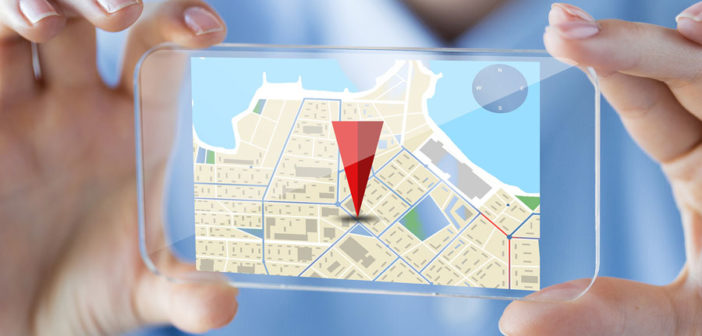Many mobile advertisers believe GPS location data can serve as the cookie for tracking real-time consumer behavior on mobile devices.
In much the same way HTTP cookies track the browsing history of desktop users to enable relevant Web-based advertising, location-based data can help application publishers and media companies better target consumers for mobile ads and engagement.
Way cookie crumbles
As location-based targeting matures, sophisticated marketers know they must expand beyond simple geofencing campaigns. They have to scratch below the surface since there are much richer opportunities to be mined from a variety of location data for overall branding and customer targeting programs.
Advertisers often leverage location data to know when a mobile device user is near a store, restaurant or other place of business that can then trigger a mobile ad regarding the particular establishment. It is a simple equation: if someone is near your location, she becomes a relevant target and mobile advertising responds accordingly.
That is a great start, but the real value in location data can be found in building mobile audience profiles over time.
A complete mobile advertising strategy cannot be based solely on knowing where somebody is at the moment. It is where has she visited in the past, whether it be where she works, where she lives, or the businesses she frequents.
When mobile marketers have more of this information in hand, they can truly understand the audience segment they are targeting.
To create these audience profiles, marketers should consider expanding beyond the latitude and longitude of GPS location data and incorporate more accurate location data available from on-site Bluetooth beacons, Wi-Fi, Real Time Location Systems (RTLS) with RFID, and a new wave of embedded, Internet of Things (IoT) sensing technologies.
Why? Current GPS location data is generally accurate within the length of a football field, and it only provides that level of accuracy about 30 percent to 35 percent percent of the time. That is great if you want to know that a mobile user is in a shopping mall, but GPS will not tell you if that user is in a Starbucks in that mall.
Because you have to be physically closer to beacons and other location data technologies to be detected, the data provides a 10-fold increase in accuracy, enabling a much more complete picture of the user.
Shining light on beacons
According to ABI Research, the beacon market continues to grow rapidly with shipments set to pass 500 million units by 2021.
While many retailers use beacons to provide mobile ads to customers that relate to where they are in the store, the ongoing deployment of beacons also provides a tremendous opportunity for retailers and others to capture customer data for follow-on retargeting.
New technologies have recently come on the market to enable agnostic beacon detection and location services from mobile devices at scale.
Beacons rely on a phone’s Bluetooth capability to send information to a mobile app that a customer has already downloaded.
Once the customer has chosen to opt-in, the app picks up the beacon’s signal. The app then determines what to do with that signal – send a push notification, alert customer service, or simply record the visit to the location.
Patent-pending machine-learning algorithms can take these publicly available beacon signals, with corresponding latitude and longitude data, and determine the precise location for each beacon.
While using GPS to place a device at a location typically requires a person to open an app at that location, beacon detection occurs quietly and passively in the background. This feature can double and triple the size of a retargeting audience.
By capturing mobile user location data that includes both latitude/longitude with more precise location data, mobile marketing campaigns become more relevant for users and deliver a better ROI for advertisers.
Of course, this data can only be collected with the permission of the user and must always be “de-identified,” or made anonymous.
The data should never include a single device’s characteristics, but only aggregated anonymous audience segments such as “Coffee Drinker.”
On the spot
The goal of app publishers and media companies should be to encourage user permission by providing real value and building trust through creative, location-based advertising solutions.
Perhaps the most groundbreaking part of audience building via both GPS and more precise location data is the ability to capture potential new customers from competing locations.
For example, a golf center could geofence other golf courses nearby with GPS coordinates. They should also collect beacon data in their golf shops either through their own app or by partnering with other apps or networks of apps, such as Shopkick or RetailMeNot. They can then reach more golfers and entice them with advertising offers to try their course and retail store.
Think of the possibilities.
A clothing brand can find the audience that visits their retailers, driving more awareness and repeat foot traffic. Car manufacturers can determine active car shoppers by seeing who is visiting dealer lots. Hotel chains can find and reach frequent travelers. The fast casual restaurant group can attract people who work nearby for lunch specials.
BY COMBINING both targeting tactics, using latitude/longitude with beacons and other sensors to define location-based mobile audiences, campaign click-through rates (CTR) can jump dramatically over using GPS coordinates alone.
With more data points and higher accuracy from location data, marketers may find the long sought-after equal to traditional cookies for desktop advertising.
This article first appeared in www.luxurydaily.com
Seeking to build and grow your brand using the force of consumer insight, strategic foresight, creative disruption and technology prowess? Talk to us at +9714 3867728 or mail: info@groupisd.com or visit www.groupisd.com




